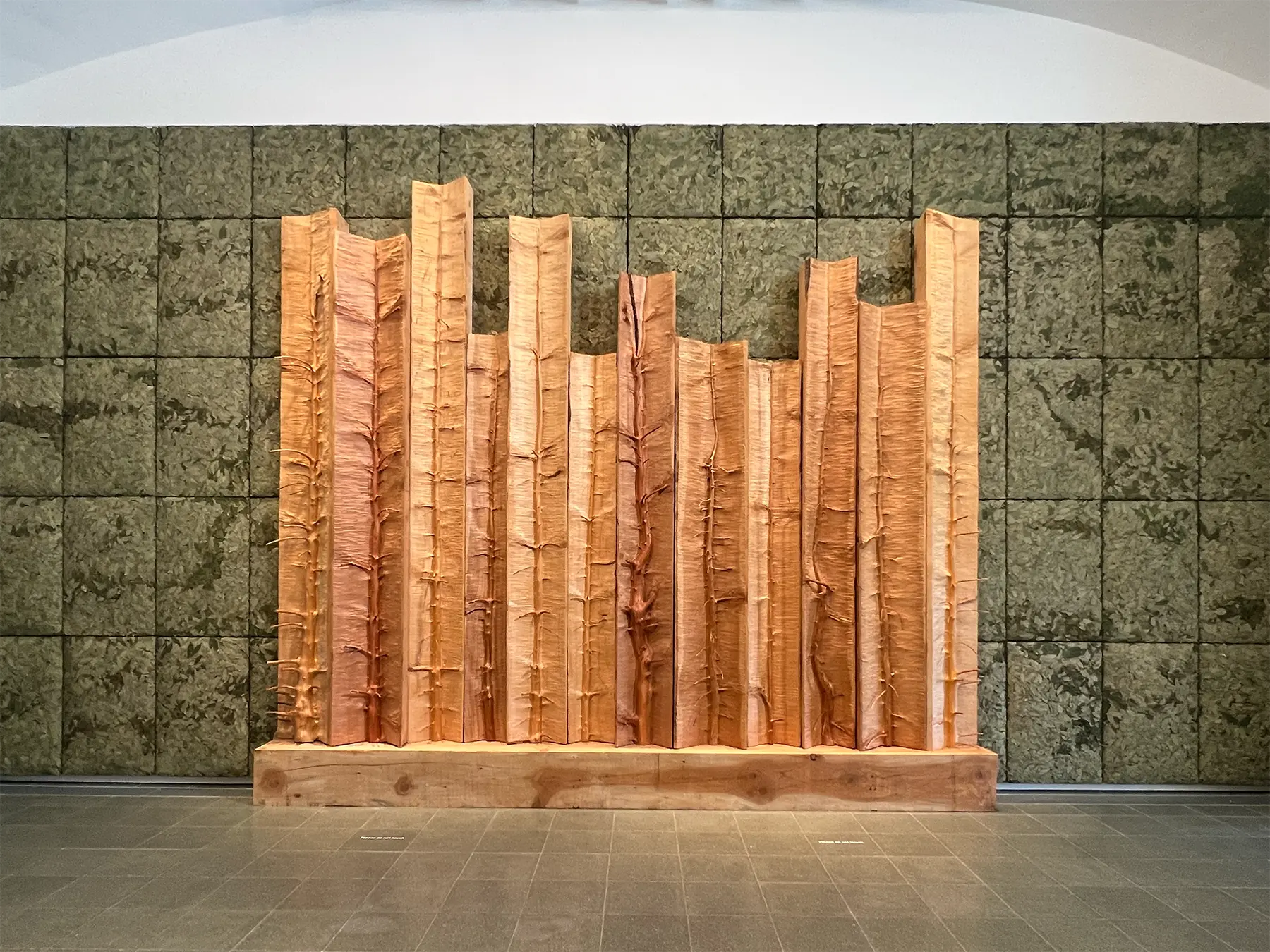
by Patrick Fetherstonhaugh
This Summer the Serpentine Galleries in London are staging the most comprehensive exhibition of the Italian artist Giuseppe Penone ever to be presented in the UK.
With works dating all the way back to 1969, almost at the very start of his career as an artist, the Serpentine exhibition will fill the gallery’s South space with his conceptual approach to the examination of “the poetic relationship between humans and nature” - including a room-filling “sensory installation” with walls covered in laurel leaves, alongside sculptures, installations, and huge images created by “frottage” (rubbing) both of and from trees.
“in my opinion, a tree is ... a perfect sculpture” - PenoneThe exhibition also spills out into the adjacent Royal Parks - “an ideal location for this exhibition” says Penone - with a group of his signature monumental bronze cast tree sculptures with stones in the forks of their branches, and a tree that was struck by lightning and has had its wound “dressed” with gold leaf - all set amongst the actual trees of the natural landscape.
“these places, this country, my relationship with the river, with the trees, with the forests ... these elements inspired my work from the beginning” - PenoneThe exhibition will explore Penone’s ongoing fascination with the relationship between humans, humanity, and the natural world.
Through his sculptures and installations the exhibition will explore how Penone “reveals nature’s hidden structures, rhythms, and gestures” - “reveal” being the operative word here as it is not unusual for Penone’s work to include bark-less stripped or partially-stripped trees.
Penone is perhaps most closely associated with the late 1960s Italian avant-garde movement “Arte Povera” (Italian for “poor art”) championed by luminaries such as Alighiero Boetti, Luciano Fabro, Jannis Kounellis, Mario Merz, Marisa Merz, and Michelangelo Pistoletto. Arte Povera celebrated the making of art from ordinary, everyday materials - as Penone himself points out though “I was the last artist to join the group”, and it is clear from his later work with its wide use of materials including bronze and gold leaf, that he would go on to stray a little from the original message.
He is however remarkable for the consistency of his work (“your artistic journey has been a continuous and uninterrupted process” - Alain Elkann), from almost day one he would “intervene” in live trees, embedding objects or guiding growth to produce a living, growing, and changing “memory” of an artistic action.
“the two paths that I have created—inside the gallery and outside of it, in the park—become two integrated gardens - Penone
 To coincide with the exhibition Gagosian are publishing the first English translation of Alain Elkann’s 2022 book 474 Answers. The noted Italian author and journalist, who has written a weekly interview column for the national daily newspaper La Stampa since 1989, has interviewed Penone multiple times and this book - across more than 350 pages and with a plethora of images - is something of an exploration as well as a biography, delving deeply into Penone’s life, encompassing his art, creativity, friends, family, and travels.
To coincide with the exhibition Gagosian are publishing the first English translation of Alain Elkann’s 2022 book 474 Answers. The noted Italian author and journalist, who has written a weekly interview column for the national daily newspaper La Stampa since 1989, has interviewed Penone multiple times and this book - across more than 350 pages and with a plethora of images - is something of an exploration as well as a biography, delving deeply into Penone’s life, encompassing his art, creativity, friends, family, and travels.
“the process of creating this book can be likened to a nostalgic journey back into the memory of my experiences” - Penone

“Giuseppe Penone: Thoughts in the Roots” is at the Serpentine Galleries, London from April 3 to September 7
The English version of 474 Answers will be available in April.
top left: Albero folgorato (Thunderstruck Tree), 2012, installation view Versailles 2013, Photo © Archivio Penone; top right: Idee di pietra – Ciliegio (Ideas of Stone - Cherry Tree), 2011, installation view Versailles 2013, Photo © Archivio Penone; bottom: Alberi libro (Book Trees), 2017 and Respirare l’ombra (To Breathe the Shadow), 2000, installation view, Serpentine South


